|
Displaying items by tag: Museum
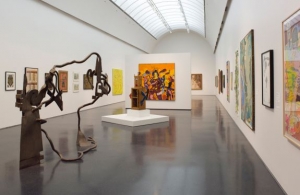
Longtime supporters of Chicago’s Museum of Contemporary Art, Sam and Helen Zell, donated $10 million to the institution on behalf of the Zell Family Foundation. It is the second substantial gift the museum has received in less than seven months.
Business and publishing magnate, Sam Zell, and his wife, Helen, hope to create “The Zell Fund for Artistic Excellence” through their sizable gift. Helen served as the chair of the museum’s board from 2004-2008 and has served on various other museum committees. She is currently chairman of the collection committee.
Madeleine Grynsztejn, the museum’s director, said, “The museum is extremely grateful for this generous gift.” Grynsztejn plans to use the money to help underwrite programs like the museum’s outdoor summer plaza series, exhibitions, and artist residency programs, expand its education lectures and programs, and to help pay off debt stemming from the museum’s mortgage on its building at 220 E. Chicago Ave.
The museum received another $10 million gift in April of this year from Stefan Edlis and Gael Neeson. Edis, a trustee since 1981, and Ms. Neeson are longtime supporters of the museum.

The Getty Research Institute in Los Angeles has acquired a number of 18th and 19th century prints by James Ensor (Belgian, 1860 – 1949) and Jean-Jacques de Boissieu (French, 1736 – 1810). An anonymous collector gifted the works to the museum. “Prints are a significant collecting priority for us,” said Marcia Reed, chief curator of special collections at the Getty. The gift will flesh out the museum’s already impressive Ensor holdings and will add a solid representation of Boissieu’s work.
Among the Ensor prints are three hand-colored etchings that are exceptional examples of his work from the 1890s, the period that is considered to be his artistic peak. Two of the three prints were inspired by Edgar Allen Poe stories and bear the skeletons, masks, and crowds of people that Ensor often included in his work. The Getty already has a compilation of Ensor’s correspondence and manuscripts including 100 signed postcards and letters, 16 prints, and his masterpiece, Christ’s Entry into Brussels in 1889 in its collection.
The gift of Boissieu’s work includes 23 etchings that span the artist’s career. Well-known as a painter and draftsman, Boissieu was also a renowned printmaker and was highly regarded for his work during the 18th century. The collection includes several sheets of Boissieu’s studies of heads – both human and animal.
The Getty Museum plans to host a major, monographic exhibition of Ensor’s work in 2014. The show will include the prints gifted to the Research Institute.
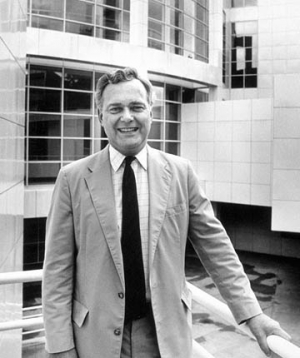
When Gudmund Vigtel was named the High Museum of Art’s director in 1963, it was a sensitive time for Atlanta’s art world. More than 100 members of the Atlanta Arts Association and their family members had died the year before in a tragic plane crash. The city’s civic leaders hoped that Vigtel could turn the museum into a living monument of sorts.
Vigtel came to the High Museum from the Corcoran Gallery of Art in Washington where he served as the assistant director. Civic leaders turned to Vigtel to spearhead the fund-raising campaign they started with hopes of remaking the museum. As it turns out, they chose the right man for the job.
During his 28 years at the High Museum, Vigtel transformed it from an unsuspecting, modest institution to one of the U.S.’s most renowned art museums. Vigtel oversaw the museum’s move from a small brick building to an architecturally groundbreaking 135,000-square-foot postmodern structure designed by Richard Meier. While the relocation happened in 1983, Vigtel began fund-raising and seeking out an architect in the mid-1970s.
Vigtel tripled the size of the High’s permanent collection and implemented an art appreciation program for children. He also started one of the country’s first African-American art collections. The decorative arts collection he opened at the museum has gone on to become one of the finest in the country. After acquiring hundreds of works by 19th- and 20th-century American and European artists, Vigtel left the High Museum with a $15 million endowment, which has since grown.
Vigtel died at his home in Atlanta at the age of 87. His wife, two daughters, four grandchildren, and a profound legacy survive him.
U.S. Immigration and Customs Enforcement (ICE) returned more than 4,000 pieces of looted cultural artifacts to the Mexican government. A repatriation ceremony was held on October 25 at the Consulate of Mexico in El Paso, Texas. The items were recovered in El Paso, Phoenix, Chicago, Denver, San Diego, San Antonio, Fort Stockton, Texas, and Kalispell, Montana. Many of the artifacts that were found in Texas traced to a 2008 theft from a museum in Mexico. Five pre-Columbian statues, over 4,000 pre-Columbian artifacts, and 26 pieces of pre-Columbian pottery were returned to the people of Mexico.
The repatriation that took place on Thursday is one of the largest that has taken place between the two countries. Many of the items returned date from before European explorers landed in North America. The items will be taken to the National Institute of Anthropology and History in Mexico City where they will be studied, cataloged, and distributed to museums across Mexico.
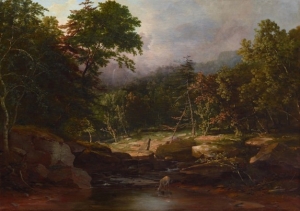
A curator at the Dallas Museum of Art discovered an unsigned painting likely created by the American landscape painter, George Inness. The work has been in the museum’s collection for more than 80 years but had been attributed to Asher B. Durand, one of the leading figures of the Hudson River School painters. The mid-19th century art movement had a profound influence on Inness’ work.
After experts at the museum questioned In the Woods’ attribution, American art curator Sue Canterbury decided to do some research on the oil on canvas. Canterbury explored other artists whose work fit with In the Woods’ aesthetic and stumbled upon Michael Quick’s George Inness: A Catalogue Raisonne. Within the raisonne Canterbury found a pen and ink drawing that bore a striking resemblance to In the Woods. It was then that the museum decided to reattribute the painting to Inness.
The bucolic forest scene has been renamed Stream in the Mountains by curators and will be display at the museum. It is a significant work because it is from Inness’ early years and not many of his works from this era have survived.
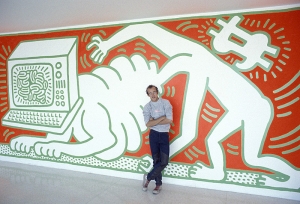
The Whitney Museum of American Art announced yesterday that it had received a $1 million grant from the Keith Haring Foundation. The endowment is to go towards exhibitions in the Museum’s downtown Manhattan building, which will open in 2015. Designed by Renzo Piano, the building is currently under construction and will allow the Whitney to increase the size and range of its exhibitions, programs, and permanent works on view.
The Museum began working with Haring in 1983 when he was presented for the first time in a Whitney Biennial and in The Comic Art Show at the Museum’s downtown branch. Adam D. Weinberg, the Alice Pratt Brown Director of the Whitney said, “Keith Haring was an extraordinary artist, exuberant, humane, passionate, and unflinching in his honesty. The Whitney has been a staunch supporter of Keith’s work for thirty years and this grant is a testament to our enduring relationship with Keith, his work, and his legacy.”
A year after his death, Haring went on to appear in the 1991 Whitney Biennial and in 1992 in an Independent Study Program exhibition, The Power of the City/The City of Power. The artist’s first full retrospective, Keith Haring, took place at the Whitney in 1997. He was also featured in American Century: Art and Culture 1950–2000 in 1999 and in 2010, the museum grew its Haring collection through a gift from longtime supporter of the Whitney, Emily Fisher Landau. The Whitney now counts four of his works in its permanent collection.
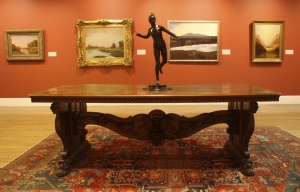
After twenty-two years, Nicholas Capasso will be leaving his post at the deCordova Sculpture Park and Museum in Lincoln, MA. Capasso, who is currently the deCordova’s deputy director for Curatorial Affairs, has been named the new director of the Fitchburg Art Museum and will start his latest venture on December 3.
During his time at the deCordova, Capasso has overseen a permanent collection that included 3,500 objects, changing gallery exhibitions, and an outdoor sculpture park. He helped to bring recognition to the institution and to reposition it as an important contemporary museum.
While Capasso specializes in contemporary art, he is eager to work with the Fitchburg Art Museum’s collection that spans more than 5,000 years and includes American and European paintings, prints, drawings, ceramics, decorative arts, and Greek, Roman, Asian, and pre-Columbian antiquities. The Museum’s collection, which is housed between twelve galleries, includes works by William Zorach, John Singleton Copley, Joseph Stella, Edward Hopper, Charles Burchfield, Charles Sheeler, Walker Evans, and Georgia O’Keeffe.
Capasso will take over the role of director from the soon-to-be-retired Peter Timms who has held the position since 1973.

The Corcoran Gallery, Washington D.C.’s oldest art museum, has been losing money for years and is currently in need of at least $130 million in renovations. The only major museum on the Mall that is privately owned, times have been tough for the Corcoran who must charge admission and raise large amounts of money to survive. Attendance has dropped drastically and donations to the museum have roughly halved since the recession.
The Corcoran’s commanding Beaux Arts façade and top-notch collection of 17,000 works including pieces by Winslow Homer, Edward Hopper, John Singer Sargent, Claude Monet, and Willem de Kooning are simply not a big enough draw to keep the institution afloat, especially when every other institution on the Mall offers free admission. The Corcoran’s board of trustees are currently debating between a number of options to keep the museum active including selling the current building, combining forces with another institution, and moving out of the city.
While many find the loss of the Corcoran will leave the Washington Mall with a gaping hole, the museum announced that they have been discussing possible solutions with the National Gallery of Art, George Washington University, and a few other unnamed institutions. The Corcoran hired a real estate firm as its adviser in September and hopes to have its future mapped out by the first half of 2013.
The District of Columbia Historic Preservation League is looking to extend the landmark designation for the Corcoran’s exterior and interior. If the institution were approved, any major construction would be subject to public review.
Art collector, philanthropist, and financier, Eli Broad, announced this week that he will donate 19 works to the Eli and Edythe Broad Art Museum at his alma mater, Michigan State University. The contemporary art museum is slated to open on November 10th. Designed by the architect, Zaha Hadid, the 46,000-square-foot museum was expected to open in April but was delayed due to construction.
Broad’s donation includes a large-scale piece, Containment 1, by the American sculptor Roxy Paine that will be displayed outdoors. There are other works by various artists including Robert Longo, Elizabeth Murray, Terry Winters, and Jonathan Lasker, which are worth around $2 million collectively.
Broad donated $28 million for the museum, with $21 million going toward construction and $7 million for acquisitions, exhibitions, and other functions. Michael Rush, the museum’s director, is curating the inaugural show.
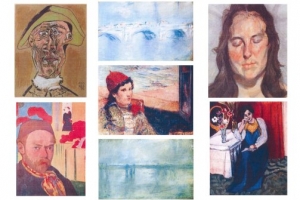
The victim of a devastating art heist that took place last Friday, the Kunsthal Museum in Rotterdam claims their security system is not to blame. The Museum’s director Emily Ansenk shot down allegations that a rear emergency door had been left open. However, police are investigating whether or not there was someone in the museum after hours that could have opened the door for the thieves, as there were no signs of forced entry.
After robbers swiped seven artworks including paintings by Picasso, Matisse, and Monet, the Kunsthal became the subject of intense scrutiny. The Museum admitted to Dutch police that there were no security guards on duty when the robbery occurred. An external security firm was the first to respond when the Museum’s alarm went off. Museum officials claim that their security system, which relies solely on alarms and security cameras, is state-of-the-art.
Late on Friday, police released three grainy surveillance photos of the burglars exiting the Museum out of a back door. While their faces were not visible, police hope that the bags the thieves were carrying are recognizable. Police proceeded to post leaflets around the neighborhood, asking potential witnesses to step forward.
|
|
|
|
|